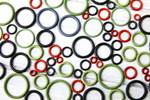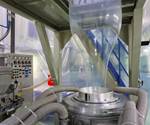Graphene Nanomodified Glass-Reinforced Nylon 66 Holds Much Promise for New Automotive Applications
OCSiAl’s Tuball graphene nanotubes are used by composites compounder in a line of glass-filled nylon 66, with other polymer developments underway.
Over the last few years, we have reported on Tuball graphene nanotubes from Luxemberg’s OCSiAl (U.S. office in Columbus, Oh.) and their evolving use in thermoplastics. The most recent news comes to us from Russian composites materials manufacturer Polyplastic, which has recently focused on adding Tuball to glass-filled nylon 66 for use in automotive applications. The company, which has facilities, R&D centers and sales teams across Russia, is selling its materials globally with current partners that include Borealis, DuPont and KraussMaffei.
OCSiAl sources note that automotive OEMs across the world are demonstrating a keen interest in new polymers with nanomaterials. This, the result of the ongoing transformation of the automotive industry, increasingly stringent environmental requirements, and the transition to electric vehicles. The modification of plastics with graphene nanotubes have been shown to lead to impressive results in anti-friction and anti-wear coatings, as well as exterior parts painted using the electrostatic painting method.

Polyplastic has developed a number of nanocomposite polymer materials using OCSiAl’s Tuball graphene nanotubes with the latest development a nanomodified glass-filled nylon 66, sold under the tradename Armamid. According to the company, introducing as little as 0.15% by weight of Tuball Matrix 826 concentrate of graphene nanotubes into nylon 66 results in the insulation resistivity of 10^6 to 10^8 Ω cm required by the industry standards, while the strength properties of the material are retained.
Reportedly, introducing nanotubes into nylon drastically changes its properties, including making it electrically conductive, which allows manufacturers to use it on a standard line for painting plastic parts. This significantly reduces the cost of production, making it more efficient and environmentally friendly. Unlike previously used methods, the nanomodification of nylon ensures a constant resistivity level and does not have an adverse effect on the material’s durability.
The production of car exterior parts made of glass-filled Armamid with graphene nanotubes is an innovative solution for the automotive industry, according to OCSiAl and Polyplastic. Preproduction testing of an electrostatically painted car fender made of a conductive polymer is scheduled to commence before year’s end. Said Polyplastic R&D director Mikhail Katsevman,“The impressive results we already see today confirm that the future of many industries may be associated with nanotube-modified materials, and Polyplastic has the necessary research and production potential to achieve that.”
Meanwhile, technologies for introducing graphene nanotubes into various other polymers including PE, ABS and PP are also under development. Nanomodification of PP for reduced-weight electric vehicle components is a one key focus, according to OCSiAl.
Related Content
-
Fundamentals of Polyethylene – Part 6: PE Performance
Don’t assume you know everything there is to know about PE because it’s been around so long. Here is yet another example of how the performance of PE is influenced by molecular weight and density.
-
Prices of PE, PP, PS, PVC Drop
Generally, a bottoming-out appears to be the projected pricing trajectory.
-
Prices Up for PE, PP, PS, Flat for PVC, PET
Trajectory is generally flat-to-down for all commodity resins.
















